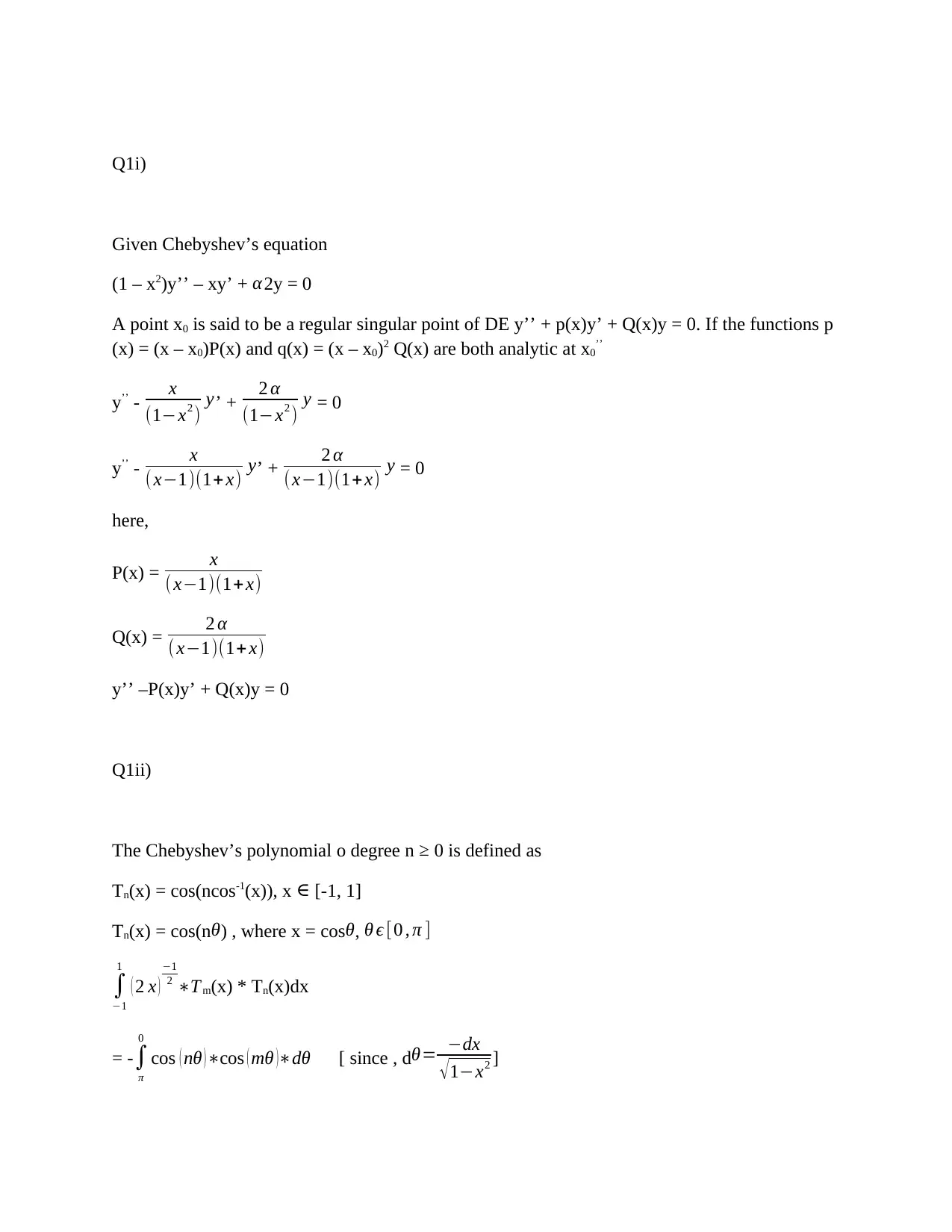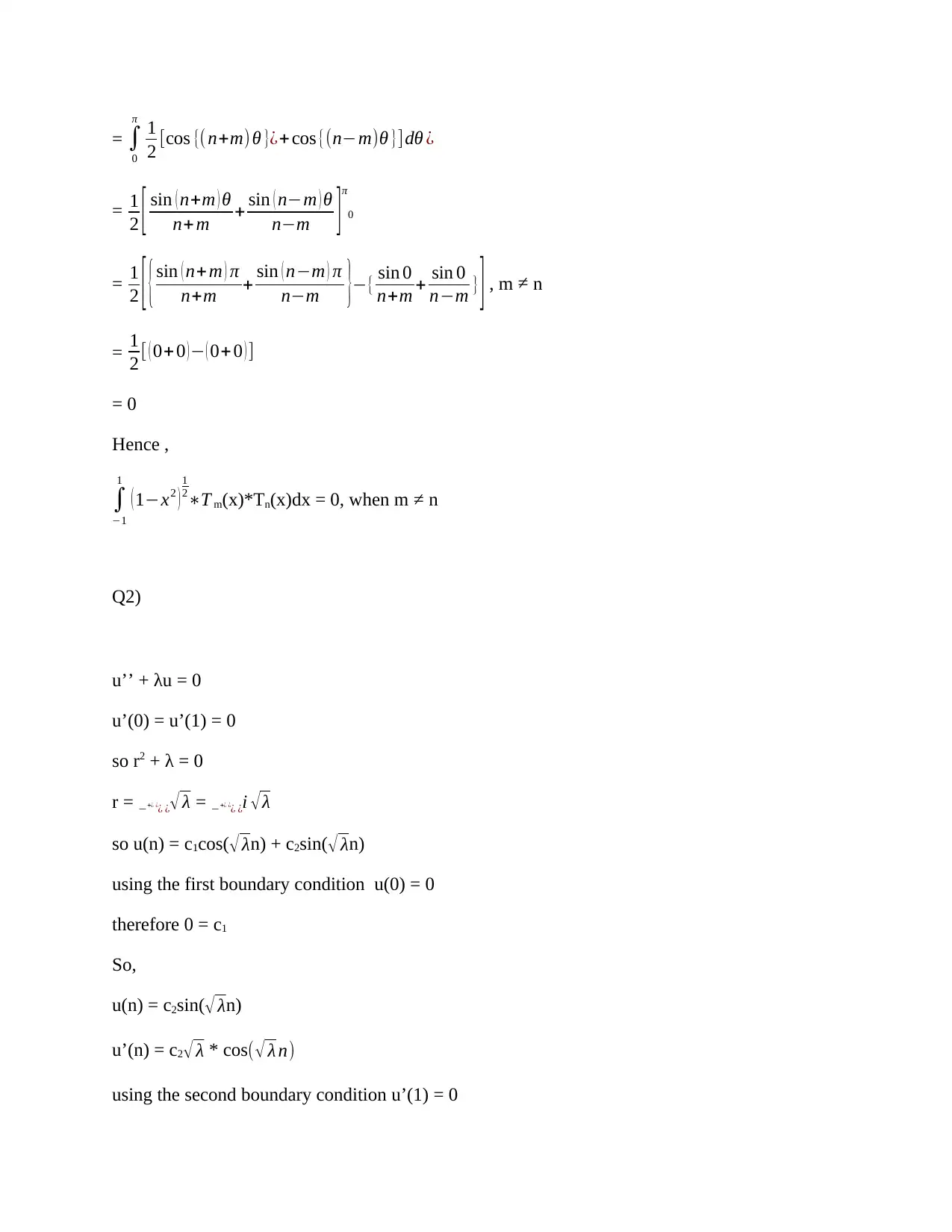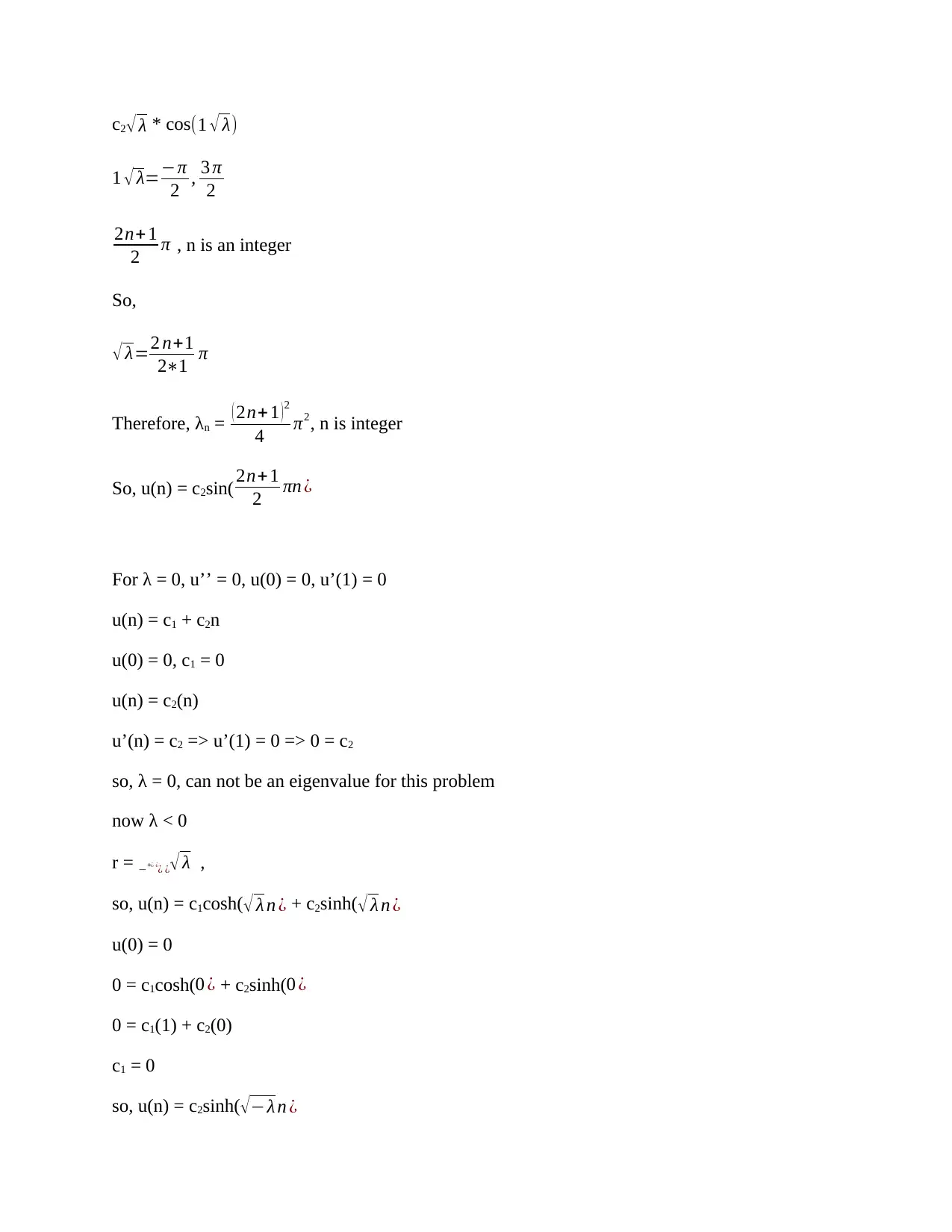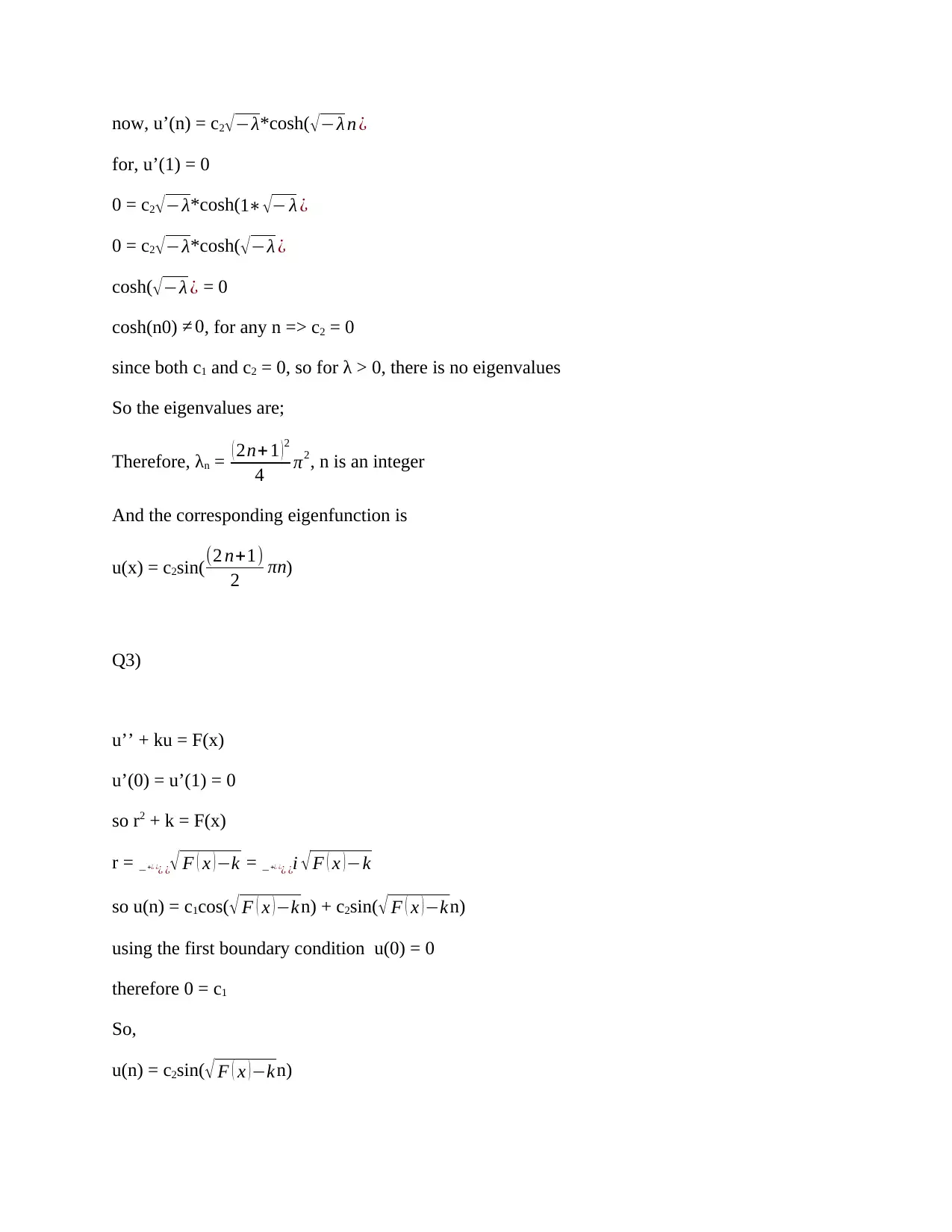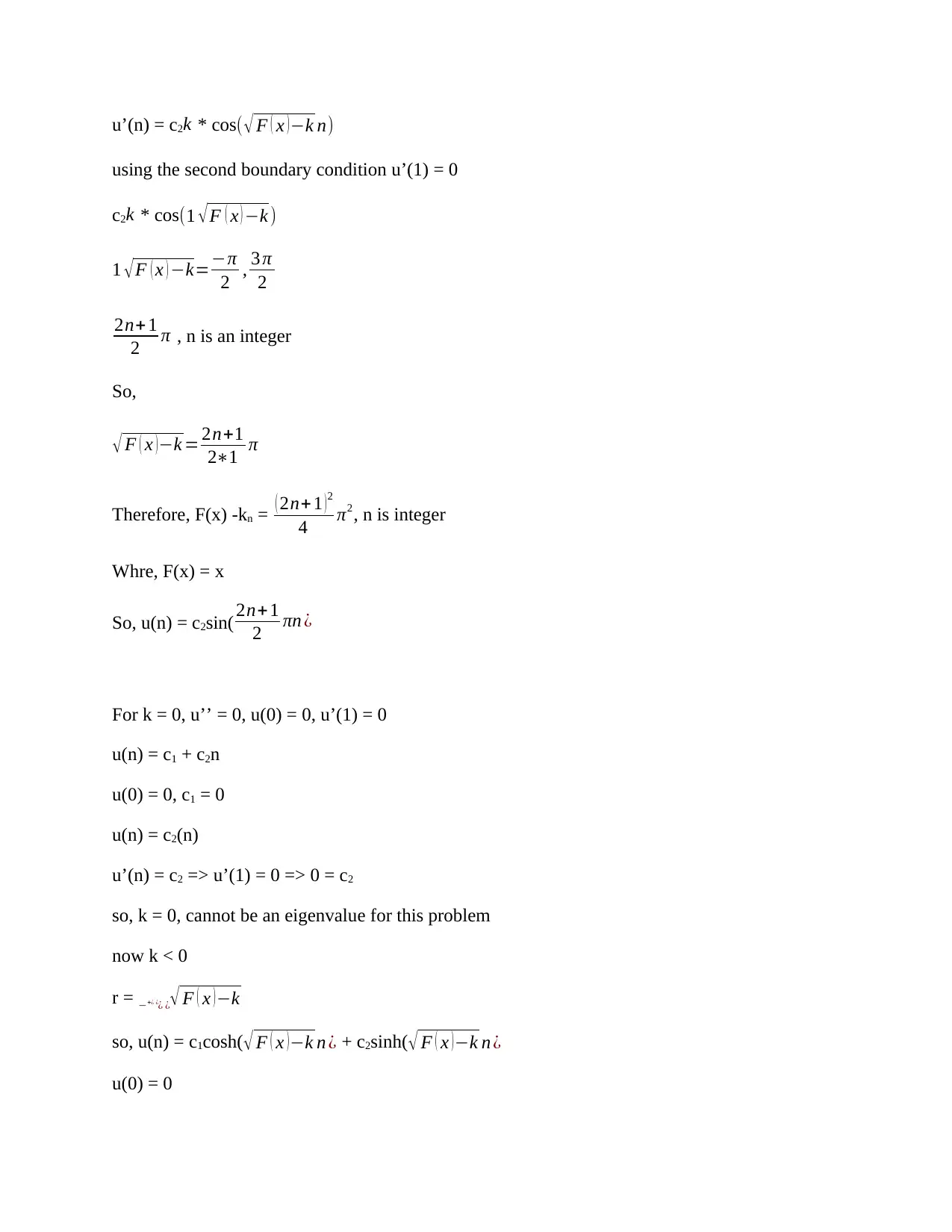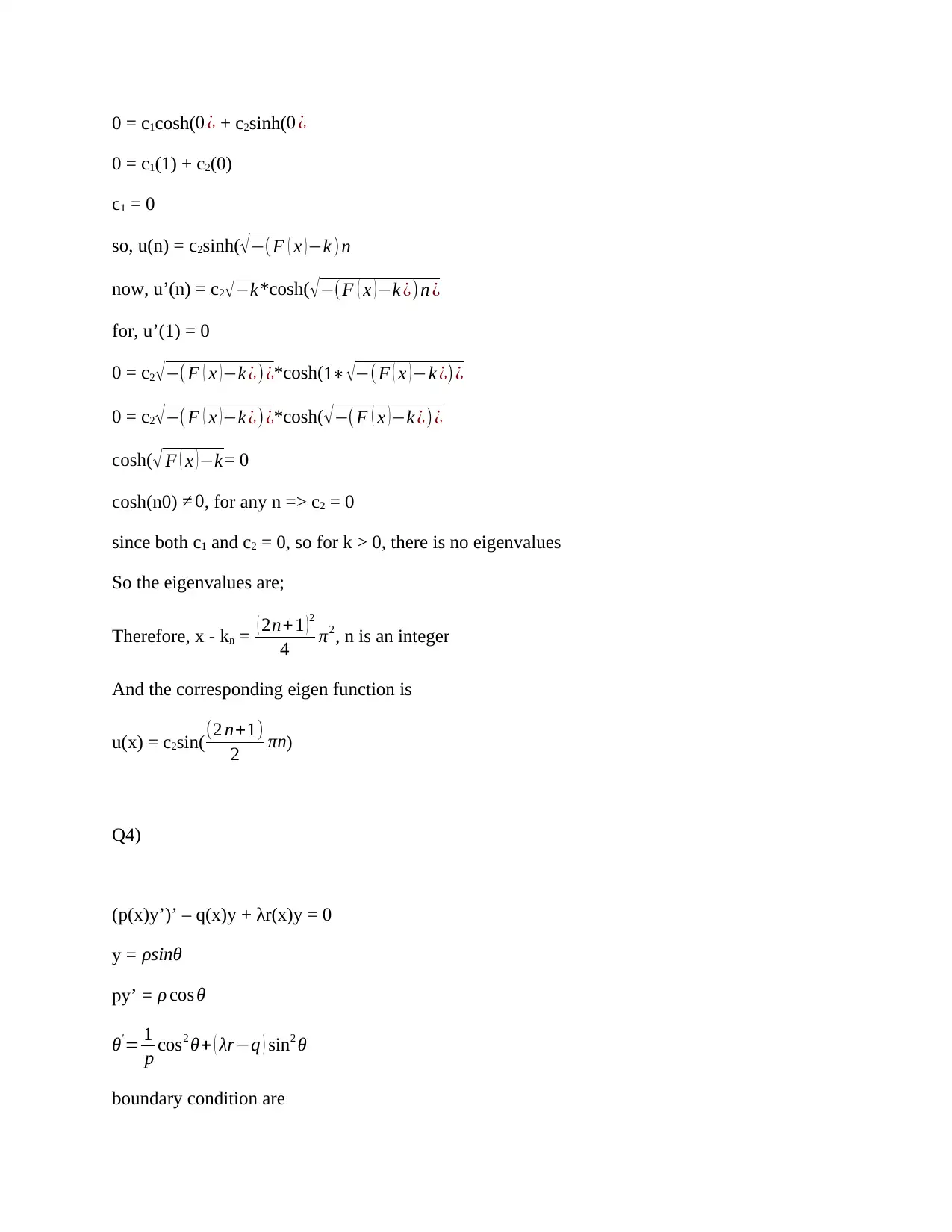Analyzing Solutions of Chebyshev's Equation and Polynomials
VerifiedAdded on 2023/06/06
|8
|1661
|342
Homework Assignment
AI Summary
This assignment provides detailed solutions to problems involving Chebyshev's equation and polynomial analysis. It begins by identifying regular singular points of a given differential equation and then delves into the Chebyshev polynomials, defining them and demonstrating their orthogonality. The solution further explores eigenvalue problems, deriving eigenvalues and corresponding eigenfunctions. The document also addresses non-homogeneous equations and boundary conditions. The final section discusses the transformation of a second-order differential equation and its properties. Desklib is mentioned as a resource for students seeking more solved assignments and past papers.
1 out of 8
